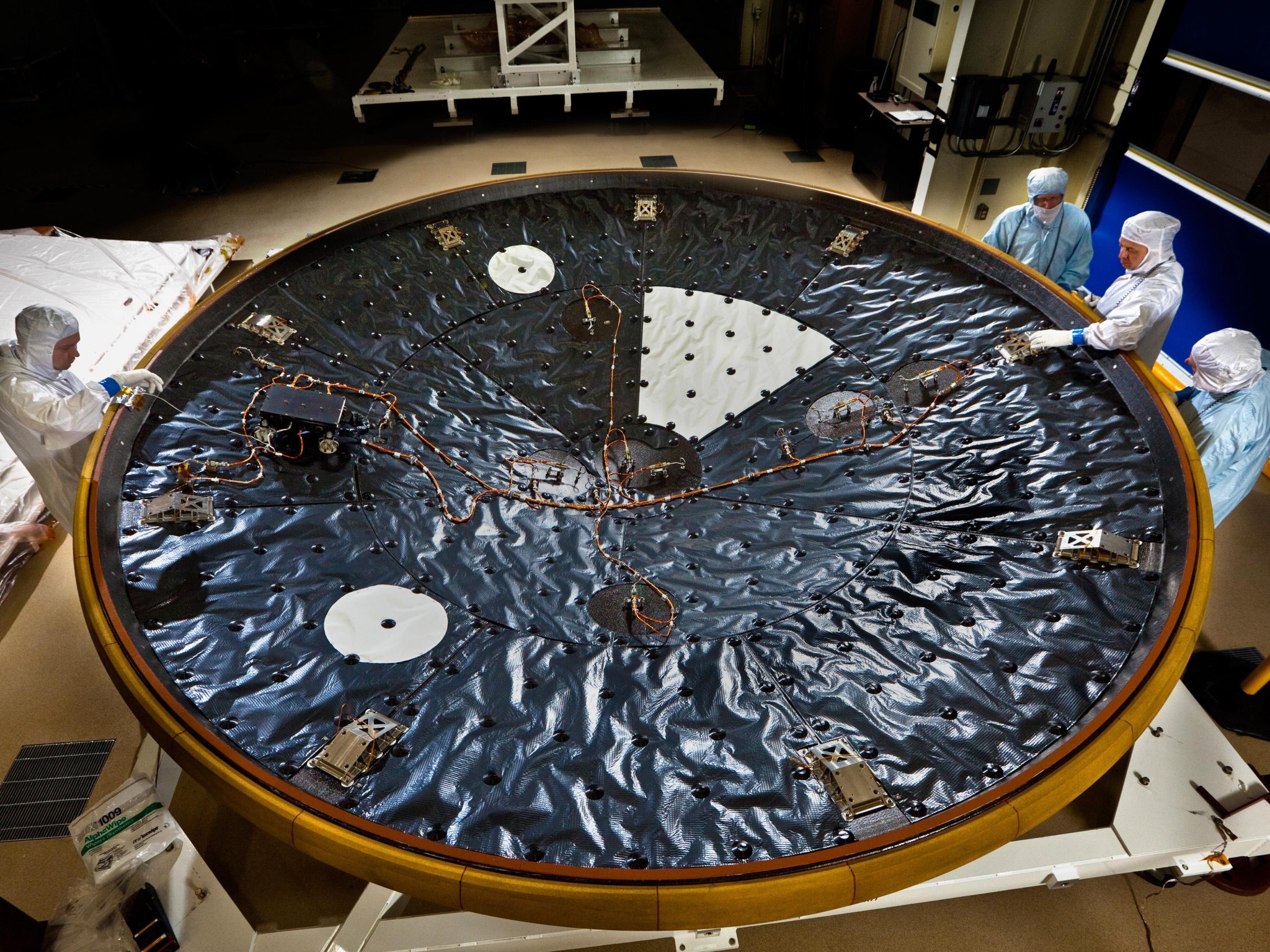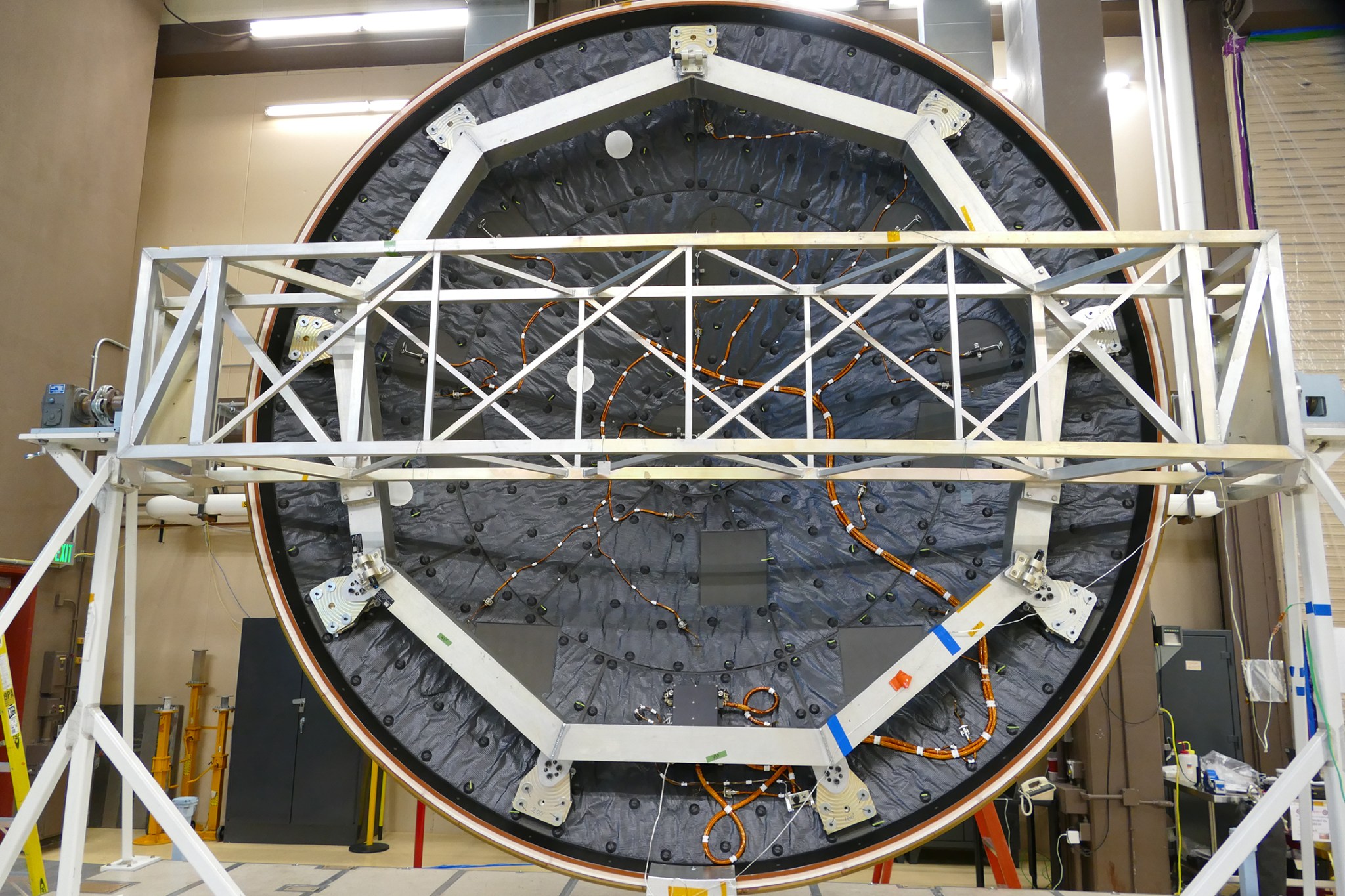When the Mars Science Laboratory mission — the latest entry in NASA’s Mars Exploration Program — reached the red planet in August 2012 to deliver the Curiosity science rover to the surface, NASA researchers also were studying a complex instrumentation payload in the entry vehicle’s heatshield. Its successful results were expected to significantly influence how we send future robotic and human missions to Mars.
MEDLI, the MSL Entry, Descent, & Landing Instrument suite, included a set of sophisticated engineering sensors designed to measure the atmospheric conditions and performance of the entry vehicle’s heatshield during atmospheric entry and descent. While not part of the core scientific payload of the Mars Science Laboratory, the instrument suite provided important engineering data for the design of entry systems for future planetary missions.
Its innovative Mars Entry Atmospheric Data System pressure sensors gathered information about the aerothermal and aerodynamic characteristics of the entry vehicle as it descended and studied the Martian atmosphere itself. The MEDLI Integrated Sensor Plugs, comprised of thermocouples and recession sensors, analyzed the performance of the Mars Science Laboratory’s thermal protection system.
The MEDLI experiment, designed and developed by NASA’s Langley Research Center in Hampton, Virginia, in partnership with NASA’s Ames Research Center in Moffett Field, California, was vital to future NASA exploration of Mars. After launching to space in 2011 and traveling to the red planet, the Mars Science Laboratory spacecraft entered the Martian atmosphere traveling more than 3.5 miles per second — the second fastest NASA entry at Mars to date, after the Pathfinder mission in 1997. The vehicle’s aeroshell was much larger than Pathfinder’s, the craft itself was much heavier and its entry included the first-ever guided lifting trajectory attempted there — all conditions that resulted in the highest heat flux and shear stress ever faced by a vehicle’s heatshield at Mars.
Because the Martian atmosphere is primarily composed of carbon dioxide, design and testing of the entry system to withstand such environments relied primarily on simulation tools. It is very difficult to conduct experiments on Earth that simulate all aspects of a Mars entry. As a consequence, the spacecraft had to be designed with large safety margins — which came at the cost of payload mass. The successful MEDLI experiment could help NASA dramatically reduce these margins on future missions, enabling more robust robotic studies and, in time, human journeys of discovery on Mars.
The MEDLI suite powered up successfully Aug. 5, 2012, during the Mars approach. About an hour before entry, descent and landing, the sensor suite’s temperature stabilized at minus-20 degrees Fahrenheit, readying MEDLI for its journey through Mars’ atmosphere. Real-time streaming data from the shield sensors was acquired through much of the vehicle’s entry and descent — barring the brief UHF-frequency communications blackout upon entry — until Curiosity deployed its parachutes and jettisoned its heatshield. The Curiosity rover touched down smoothly in Gale Crater on Aug. 6, 2012, to begin its two-year primary mission.
Researchers made their initial analyses of MEDLI data and experiment results in 2013. In the wake of its successful flight, MEDLI data is being evaluated for continued data analysis and possible flight on a future Mars lander mission. The findings are helping NASA engineers design safer, more efficient entry systems for future missions to Mars and other destinations — missions carrying human crews as well as future robotic explorers similar to Curiosity.
NASA’s Technology Demonstration Missions are sponsored by the agency’s Space Technology Mission Directorate in Washington.
Related Links






























